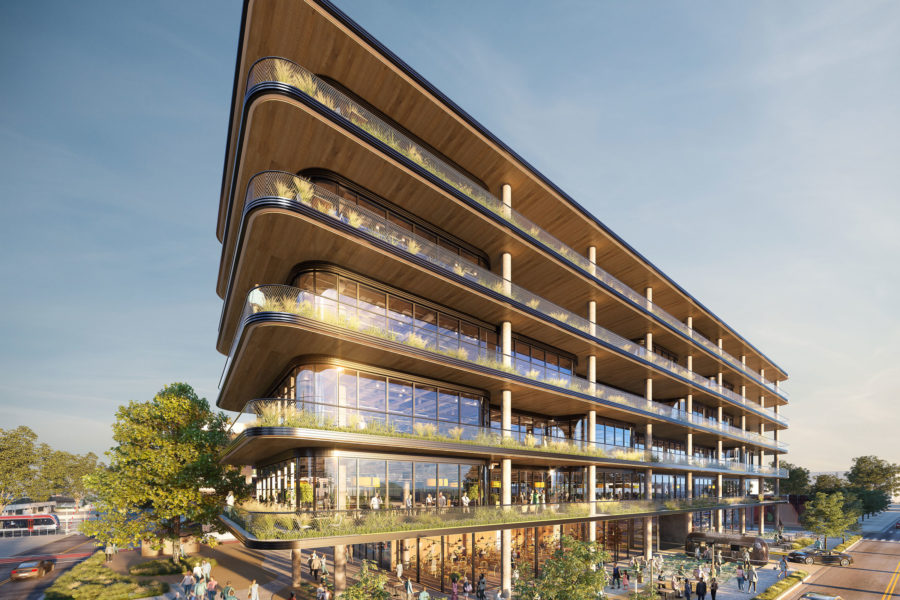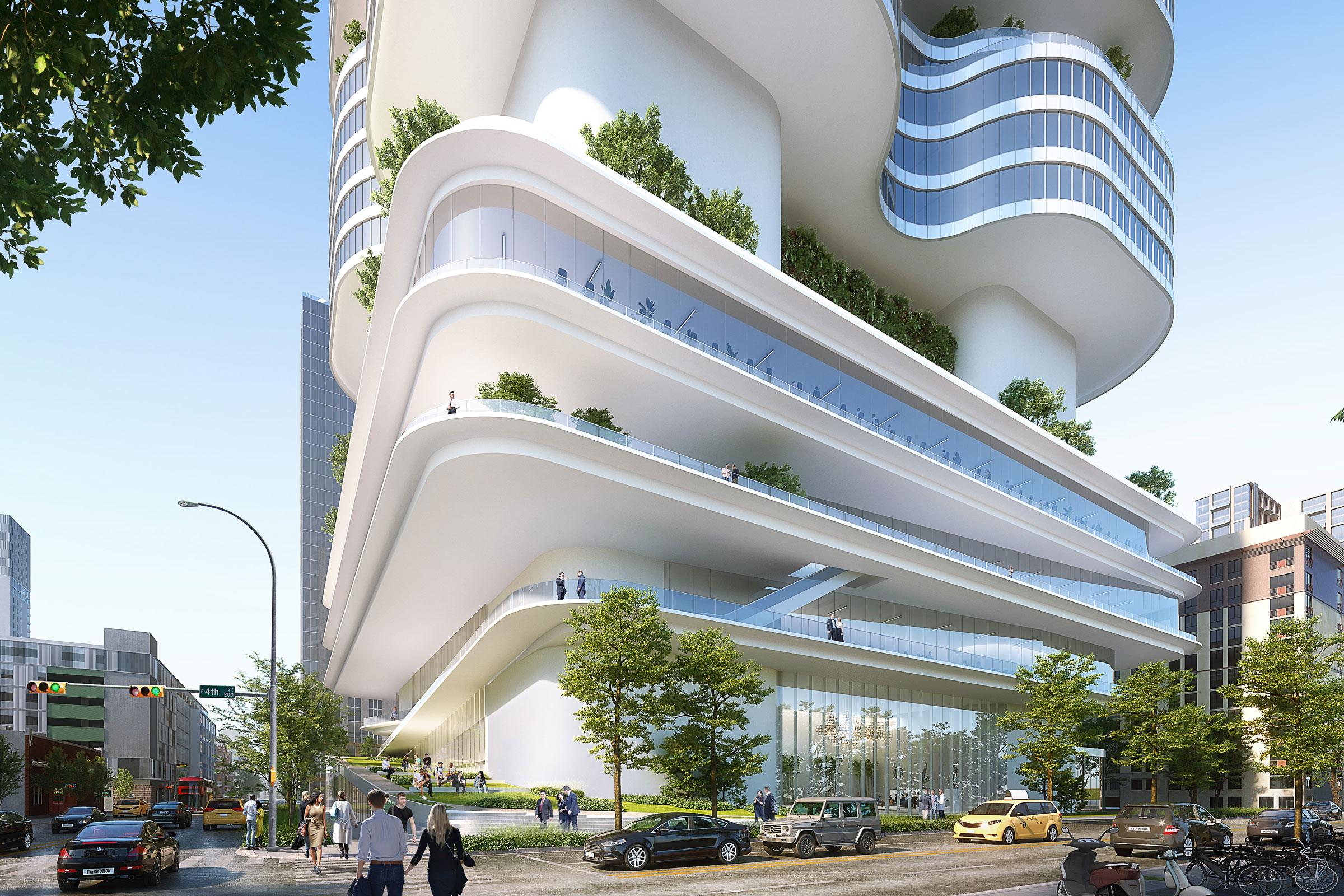Story at a glance:
- Perkins&Will shares the importance of introducing public space to the private sector.
- Architects are considering questions around public transportation and more inclusive infrastructure.
The influence of healthy outdoor space on societal well-being cannot be overstated. During a global crisis that confined us to our homes, public parks, and plazas offered a crucial respite from the bleak media cycles that plagued our daily lives. Alongside a heightened awareness of the importance of outdoor spaces, a corresponding discussion on the equity of public space has emerged. Who has access to our parks and green spaces, and who does not? What can we as designers do to facilitate a more equitable and inclusive built environment?
Many design firms and organizations are doing incredible work building a network of new and enriched outdoor spaces in our cities. The Waterloo Greenway Conservancy, for example, is implementing a 1.5-mile park system that will greatly enrich downtown Austin’s community and environment. That said, for residents who live 20 blocks or more away from the greenway, accessing this community asset becomes much more challenging. This is where the private sector needs to step up.
In our Corporate, Commercial, and Civic practice at Perkins&Will’s Austin studio, we encourage commercial developers to evaluate how they can add to the public domain and its network of outdoor space. If we want downtown Austin to thrive, particularly in a changing climate, we need to provide our community with spaces for retreat and refuge.
Block 41, Austin

New developments like Block 41 in Austin bring added green space. Rendering courtesy of Perkins&Will
Our team is currently designing a 46-story commercial office tower called Block 41 in the central business district of Austin.
From the outset of the design process, we approached outdoor space as an integral part of the workplace rather than an amenity, by providing more than 3,000 square feet of outdoor space on every occupied office floor. There is already a growing trend in office design to program for outdoor workspaces and balconies, developed mainly in response to COVID-19 and tenant demand for safe spaces to engage with others.
With this project we have tried to take this strategy a step further. In addition to the private tenant spaces, we recognized in this project a huge opportunity to give space back to the public realm, integrating an 8,000-square-foot public plaza on the ground floor. The commercial building becomes a space where any community member can come in and spend some time out in the shade, read a book, or catch up with a friend.
How We Did It
Generous outdoor spaces as these can be utilized year-round and therefore are financially feasible only if designed properly. For the Block 41 project, because the ground level public plaza sits within the property boundaries it is covered by the building above, which provides solar protection from the Texas sun. The landscaping is designed to be abundant and lush to help mitigate the heat island effects and as an added benefit enriches the street-level restaurant, retail, and pedestrian experiences.
On the typical office levels, each outdoor terrace is covered by the next level above and is deep enough to provide solar protection. Similar to the ground level plaza, we designed these outdoor terraces with ample amounts of plush landscaping in an attempt to create an ecosystem that can help mitigate the heat during the hottest days of the Texas summer and provide a pleasant workplace setting anytime of the day.
Planning for the Future

Rendering of a project in Austin. Image courtesy of Perkins&Will
Moving forward, there is an opportunity to create a network of these spaces throughout more densely developed cities. These outdoor areas or urban parks built into the fabric of the private sector can increase access to the natural world for those who historically have gone without. The most equitable spaces are public-facing, readily available, and accessible because everyone has the right to use those spaces. We are increasingly prompting conversations about equity and public space in planning future commercial projects, and it has been rewarding to see that these ideas are resonating with developers.
We have several upcoming projects that incorporate this concept in different ways. One such project is a downtown multi-family high-rise development that sits directly across from a public park. The project is in early design stages, but we are planning to connect the public park as part of the street-level experience of the development.
Additionally, we have other downtown projects that face streets slated to be part of the future rail line infrastructure plan called Project Connect. Important questions we are working to solve are: How will these projects engage and integrate with public transportation, how do these projects improve upon the pedestrian and passenger experience, and how do these private developments intertwined with the future public transportation infrastructure promote equity and inclusivity?
Why is it important that we have these conversations now? There is much discussion on equity and inclusion in our current social climate, and many are pushing for policy changes at the city, state, and federal levels. Policy is a great start, but it takes a great deal of action for meaningful change to happen. As designers we have an incredible opportunity to implement more immediate changes in our cities. By creating these environments and welcoming everyone in the community to visit what we have created, we can directly pave the way for a more equitable future. The more we do this, and encourage others to do this, the more we can change the mindset of what the private sector can and should look like.
Of course, there is a delicate balance to strike when pursuing this aim. While building new developments can bring assets like outdoor space to neighborhoods that previously lacked such amenities, they can also drive prices up and push underrepresented communities out of those neighborhoods. I don’t claim to have the correct answer to the problem and can only work to maintain and respect the existing history of a community. Trying to repair something that has been broken for some time is no easy feat; the first step is to rebuild trust within our neighborhoods and communities. Our studio hopes to play a part in regaining this trust by using our projects to give space back to the public.



